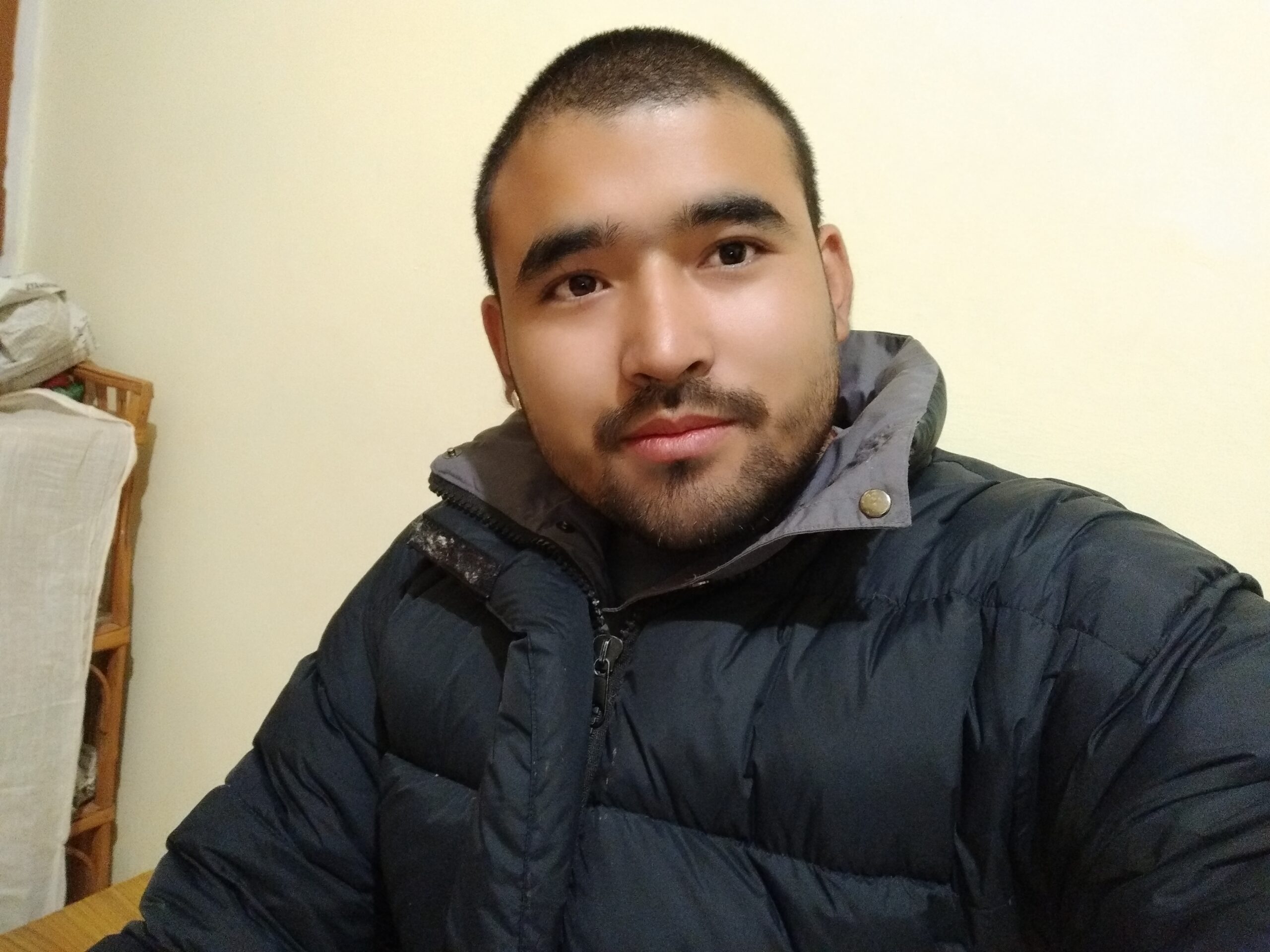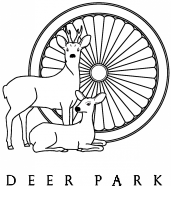
Sacred Art of Tibet Beginner Thangka Art Workshop with Tsering Norbu
The basic idea of dharma art is the sense of peace and refreshing coolness of the absence of neurosis. We have to be genuine and gentle. Otherwise, there is no way to work with the universe at all.
—-Chogyam Trungpa Rinpoche,
from the book “True Perception”
Short Intro
Through the ancient art form from Tibet, a world of contemplative practice and sacred iconography is found by firsthand experience of drawing, painting and crafting a thangka.
Over 7 days in Deer Park Institute in Bir, by appreciating, understanding and practicing of thangka art, we dive into the beauty of art from the Himalayas and plant a seed for further sacred arts practice as a lifelong path of inner explorations.
Language: Hindi, English, Tibetan, Chinese
Facilitator:
Tsering Norbu
Introduction of Thangka Art
Thangka painting belongs to the “life and craft” group of learnings (śilpa-karma-sthāna-vidyā) from the five main subjects (Pañcavidyā) of Buddhist training. In ancient Tibet, it was made and shared strictly among monastic communities only.
What make this dharma art relevant and still practiced today is the unique, meditative art process and its special, meritorious quality of carrying the teaching of truth in an aesthetical way that is beyond verbal words and conceptual ideas.
By sitting with pure intention and devotion in front of a canvas, starting with making a proportion grid dictated by traditional texts, the thangka painter goes through a majestic inner journey of a human’s attempt to depict and manifest somethings so unfabricated, intricately deep and even unimaginable such as loving-kindness, compassion, warmheartedness, wisdom, skillful means, dignity, emptiness and ultimately truth and enlightenment, with just a brush and a few hues of colors.
The Menri Style of Thangka Art
What we are going to learn in this workshop is from an art lineage called Menri style, which is the first genuine Tibetan artistic style, established by Menla Dondrup in the mid-15th century.
Based on several textual sources, Menla Dondrup standardized a system of measurements with various classes of deities in accordance with their merits and related qualities. The system is the basis not only for the Menri tradition, but also for several painting traditions developed afterwards.
Artistically more important is that by the genius of Menla Dondrup, deities painted in the Tibetan style were freed into open natural landscapes, which lifted Tibetan aesthetic taste and inaugurated the first genuine Tibetan artistic tradition.
Menla Dondrup was such a great master painter that he has been revered by the Tibetans as a manifestation of Bodhisattva Manjushri. The Menri style has evolved through centuries and developed several regional offshoots.
Today, it still remains as the dominant style of Tibetan thangka painting. The main guru, Gen Migmar Tsering, who taught Norbu in his 6-year training, is a current lineage holder of the Menri style lineage in Dharamsala, passed down by his previous master, Venerable Gen Sangye Yeshe.
About this Workshop
In old times Tibet, only monks painted thangkas. In modern times in India, an art novice in Dharamsala needs to spend at least 6 years in a thangka school to get a guru’s permission to become a professional painter. What can we do in seven days?
In this workshop, with the help of many images and visual aids, we will be exploring the world of thangka art by practicing according to the way a student is trained traditionally, which is firstto make proportional grids and directly go into sketching, to learn by observing and doing, without too much conceptual reasoning or historical knowledge .This is a small but important first step to understanding and practicing thangka art.
Observation, meditation and familiarization are keys to gaining an attentive mind, smooth hands and perfect awareness. All of the requirements for a thangka painter are same as for a spiritual meditator, with the expression of an art process that is contemplative and contained in nature.
As a meditative state exists in one present moment beyond duality, thus a long and rigorous process of dharma art training can last for as long as lifetimes, while it can equally happen and inspire in as short as seven days’ time we have here together in Deer Park Institute. No prior art training/religious background required
The learning of art and craftsmanship has no limit and no end. The mutual connection and benefit between artists and for both teacher/student is vastly precious.
We hope this seven-day workshop can serve as a ground for sharing our love and way of practice for beauty and truth. The pace of the workshop is in line with the spirit of dharma art and meditation, and especially follows the way how a thangka artist really works, which is with happy mind, relaxed awareness and detailed clarity.
The design and contents of this workshop course is also personally authorized and partly guided by the facilitators’ main thangka guru, Gen Migmar Tsering, who is the current lineage holder of Menri thangka painting in India. Gen Migmar gives his good wises to all future art students, and believes that this workshop would be beneficial to all.
We have a passion to share our pure devotion and artistic vision with who is willing to learn, and our ultimate hope is to make the sacred arts passing down to us from ancient lost world a modern-day worthwhile path of practice for everyone in cultivating wisdom and merit for the liberation of all sentient beings.
Main topics covered
● Introduction of thangka art through actual thangka works, sketches, digital images and videos.
● Introduction to art tools: canvas, natural pigment colors, brushes, sketches and proportions, brocades.
● Making proportional grids for thangka.
● Main art themes we will explore include:
(1) Buddha face and figure
(2) Flowers, natural landscapes and animals
(3) Mantras: basic writing and calligraphy in Tibetan
(4) Basic iconographical elements, auspicious symbols, etc.
(5) Basic hand smoothness training methods
● Mani stone mantra: preparing stone plates and writing mantras
● Documentary screening
1. Institute of Tibetan Thangka Art Documentary
2. Wandering But Not Lost
● Group exhibition among participants: Share everyone’s completed art piece. We discuss what inspires the artwork, what you have learned and what you would like to explore further in the future.
Those who would want to join are people who want to:
● Make an in-depth exploration of the sacred art of Tibet
● Know how to appreciate thangka iconography, what makes a good thangka painting, how the basic artistic elements in a thangka work, and how a good thangka may benefit and bring blessings
● Understand how the visual vehicle of dharma art can convey the meaning of deep truth through nonverbal manifestations
● Practice firsthand how to start a thangka painting from proportions, sketches and linings, to handmade canvas crafting, stone/sand colour making, and finally completing your first piece of work of a thangka.
● Develop, in an artist’s way, the six good qualities for approaching truth: Dāna(generosity), Sila(discipline), Kṣānti(patience), Vīrya(joyful diligence), Dhyāna(meditative concentration) and Prajñā(wisdom)
● Explore the way of life as a practitioner of sacred arts and cultivate a path of integrated practice for future endeavours of inner exploration.
Tentative Daily Schedule:
9:00-10:30 Morning session-1
10:50-12:00 Morning session-2
12:00-02:00 LUNCH BREAK
14:00-03:30 Afternoon session-1
03:50-05:00 Afternoon session-2
6:00 pm DINNER
Tsering Norbu (1992- ), Ladakh. (Short Introduction)
Tsering Norbu was born and raised in a remote village called Kushta (a happy place)in Padder area of Ladakh, Jammu and Kashmir, India. From 2001 to 2013, Norbu was ordained and educated as a novice monk and had his first contact with the beauty of Buddhist wall paintings. With a heartfelt aspiration to get a formal training in Buddhist art, he arrived at the Institute of Tibetan Thangka Art (ITTA, est. 1977) in Dharamsala and became a disciple under the seats of Menri lineage’s main thangka master Gen Migmar Tsering and second master, Gen Tenzin Ngodup. After a 6-year traditional and rigorous training in the ITTA thangka school, he graduated in 2018 with blessings from his masters to become an independent thangka painter. Now Norbu gets commissions from monasteries and individual orders around the world.
(Long introduction)Tsering Norbu (1992- ), Ladakh
Tsering Norbu was born and raised in a remote village called Kushta (a happy place)in Padder area of Ladakh, Jammu and Kashmir, India. His father is a devout Buddhist, a self-taught stone/mud house builder, a silversmith, a tailor and a natural farmer. His mother is also very devoted to the Buddhist practice of gaining merit, and she knows how to sing Gesar the King epic stories very well by heart.
From 2001 to 2013, Norbu was ordained and educated as a novice monk in Druk Ngawang Thubten Choeling, Bodhgaya. While he was residing in the monastery in the Land of Buddha, he served for many years as calligraphy and literacy teacher to junior monks and had his first contact with the beauty of Buddhist wall paintings.
With a heartfelt aspiration to get a formal training in Buddhist art, he arrived at Institute of Tibetan Thangka Art (ITTA, est. 1977) in Dharamsala and became a disciple under the seats of Menri lineage’s main thangka master Gen Migmar Tsering and second master Gen Tenzin Ngodup, who are both second generation students of His Holiness Dalai Lama’s designated personal thangka painter and master art instructor since the beginning of exile, Venerable Gen Sangye Yeshe (1924-2008).
After a 6-year traditional and rigorous training in the ITTA thangka school, he graduated in 2018 with
blessings from his masters to become an independent thangka painter. He started to get commissions from monasteries in and individual orders around the world. He did wall paintings and renovation projects with fellow thangka artists for Nechung Monastery and Tsechok Ling Monastery
in Dharamsala, and several stupa design/painting projects for Tushita Meditation Centre in Dharamkot.
The learning of art and craftsmanship has no limit and no end. Aside from completing thangka orders and preparing for a future art exhibition, Norbu also teaches various private classes and feels that the mutual benefit for both teacher and student is vastly precious. The design and contents of this workshop course is also personally authorized and partly guided by Norbu’s main thangka guru, Gen Migmar Tsering. Gen Migmar gives his good wishes to all future art students, and believes that this workshop would be very beneficial to all.
Norbu now resides in Bir and runs an art studio called “Art of Awakening” for students to practice and learn with him. He has a passion to share his devotion and artistic vision with a wider public who is willing to learn, and his ultimate hope is to make the sacred art from ancient Tibet a lifelong path of practice in wisdom and merit for the liberation of all sentient beings.
For Registration and accommodation, please email info@deerpark.in
